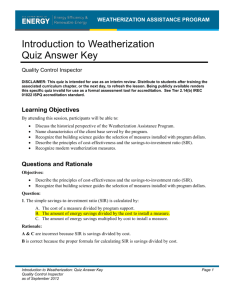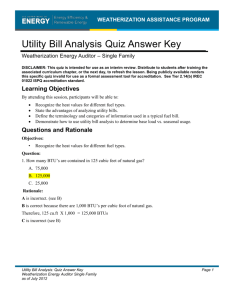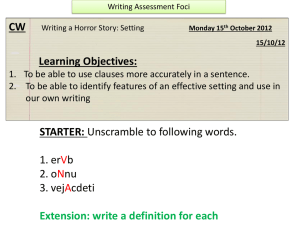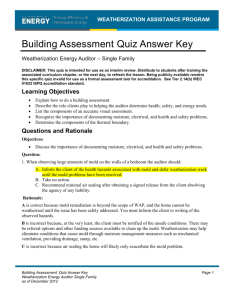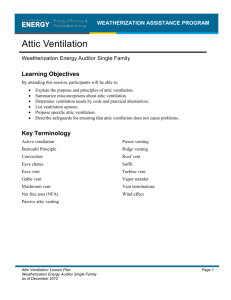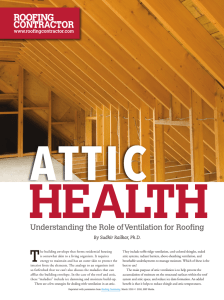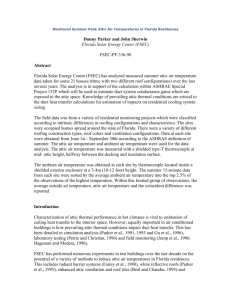Quality Control Inspector - Weatherization Assistance Program
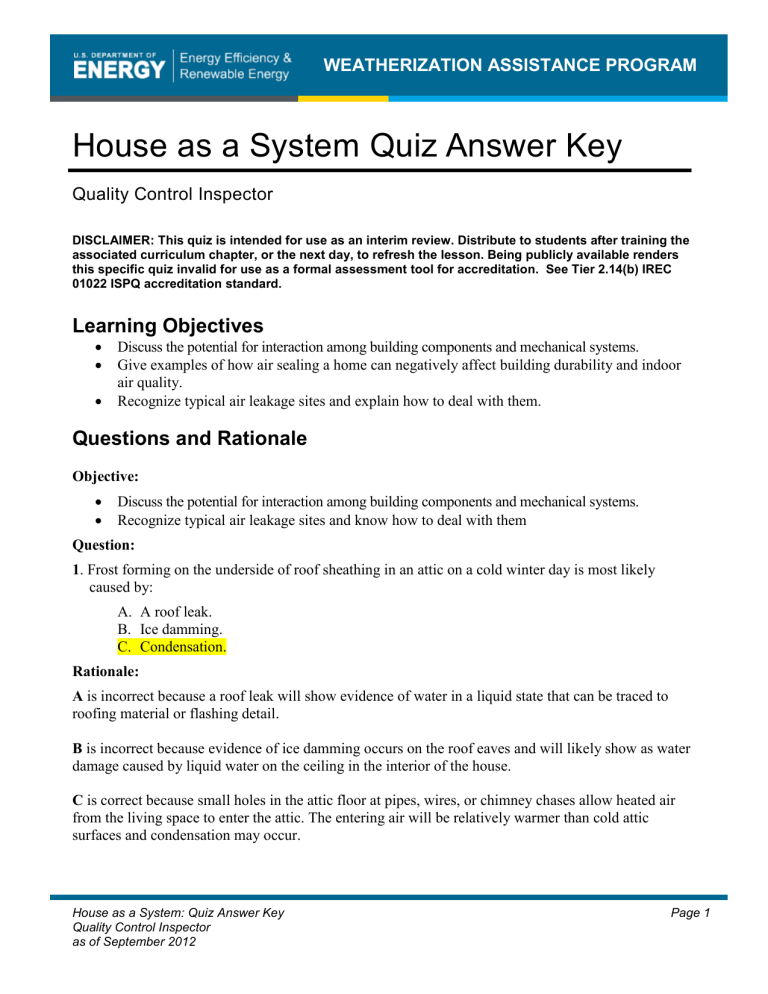
WEATHERIZATION ASSISTANCE PROGRAM
House as a System Quiz Answer Key
Quality Control Inspector
DISCLAIMER: This quiz is intended for use as an interim review. Distribute to students after training the associated curriculum chapter, or the next day, to refresh the lesson. Being publicly available renders this specific quiz invalid for use as a formal assessment tool for accreditation. See Tier 2.14(b) IREC
01022 ISPQ accreditation standard.
Learning Objectives
Discuss the potential for interaction among building components and mechanical systems.
Give examples of how air sealing a home can negatively affect building durability and indoor air quality.
Recognize typical air leakage sites and explain how to deal with them.
Questions and Rationale
Objective:
Discuss the potential for interaction among building components and mechanical systems.
Recognize typical air leakage sites and know how to deal with them
Question:
1 . Frost forming on the underside of roof sheathing in an attic on a cold winter day is most likely caused by:
A.
A roof leak.
B.
Ice damming.
C.
Condensation.
Rationale:
A is incorrect because a roof leak will show evidence of water in a liquid state that can be traced to roofing material or flashing detail.
B is incorrect because evidence of ice damming occurs on the roof eaves and will likely show as water damage caused by liquid water on the ceiling in the interior of the house.
C is correct because small holes in the attic floor at pipes, wires, or chimney chases allow heated air from the living space to enter the attic. The entering air will be relatively warmer than cold attic surfaces and condensation may occur.
House as a System: Quiz Answer Key
Quality Control Inspector as of September 2012
Page 1
WEATHERIZATION ASSISTANCE PROGRAM
Objective:
Recognize typical air leakage sites and know how to deal with them
Question :
2 . The proper material for sealing around an active chimney is:
A.
Cardboard and polyurethane foam sealant.
B.
Metal dam and high temperature caulk.
C.
Rigid foam and acrylic caulk.
Rationale:
A is incorrect because it violates fire code and is a fire hazard.
B is correct because it meets code.
C is incorrect because it violates fire code and is a fire hazard.
Objective:
Give examples of how air sealing a home can negatively affect building durability and indoor air quality.
Question:
3 . Each of the following can have a negative effect on indoor air quality except:
A.
Powerful exhaust fans in a tight house with old natural draft combustion appliances.
B.
A tight home with high moisture sources.
C.
Dry rot of structural framing members.
Rationale:
A is incorrect because exhaust fans can exert a greater pressure difference on a tighter home than on a leaky home and cause backdrafting of natural draft appliances.
B is incorrect because a tight home in combination with high moisture sources may create conditions that are conducive to mold growth.
C is correct because dry rot effects wood framing members and does not significantly impact IAQ.
House as a System: Quiz Answer Key
Quality Control Inspector as of September 2012
Page 2
WEATHERIZATION ASSISTANCE PROGRAM
Objective:
Give examples of how air sealing a home can negatively affect building durability and indoor air quality.
Question:
4 . Each of the following can have a negative effect on building durability except:
A.
Leaky can lights into an insulated attic.
B.
Balanced ventilation and natural draft appliances.
C.
An unsealed chimney chase connecting the basement to the attic.
Rationale:
A is incorrect because leaky recessed light fixtures increase heat loss and gain and can cause ice dams and moisture problems in the attic, both potentially reducing building durability.
B is correct because a well-ventilated home with a balanced system should not cause problems with building durability.
C is incorrect because the air leaking into the attic could cause ice dams and condensation.
House as a System: Quiz Answer Key
Quality Control Inspector as of September 2012
Page 3

